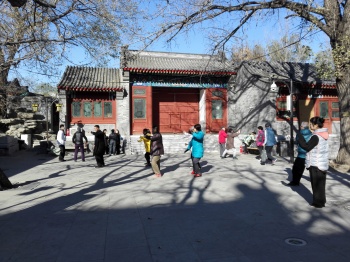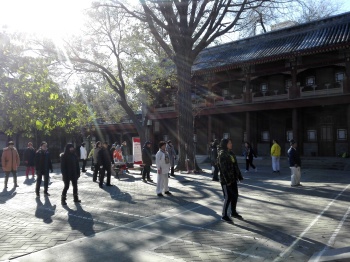Winter wonderland at Yunmengshan, Beijing
Saturday, 16. January 2021

Up in the northern part of Beijing, some 90km or 1.5 hour drive from the city’s center, lies Yunmengshan, a scenic area very close to the Miyun reservoir. In summer, visitors can “hike” the stairs up the mountain, past waterfalls and steep mountain cliffs. In winter, it becomes a frozen fairytale land when the water turns to ice and creates fantastic shapes and natural sculptures.







When coming here during winter, visitors can access only the first quarter of the overall scenic area, making this destination suitable for a relaxed half-day trip. It is not a particularly strenuous climb, as you mostly walk up stairs and along the frozen pools. You can certainly take it slowly and not even break a sweat. The only time it does get a little tricky is when passing through a “cave”, but this can also be avoided by taking the steps to the right side up the mountain.

Within the Yunmengshan scenic area there are several areas with ice sculptures, frozen branches and hanging icicles. While most of the icy sights are man made the park is still a pretty place to visit, and it’s nice to explore Yunmeng mountain on a sunny day with a hot tea in a thermos to keep you warm.
We finished our exploration of this frozen winter wonderland in time to head for a late lunch in our favorite restaurant in Miyun. After five times going there I still don’t know its name, but their barbecued sauerkraut (or 酸菜 in Chinese) is incredible and if it wasn’t for the fact that it is located almost 80km outside the city we would come here much more often.
Wonder what Yunmengshan looks like in the summer? Take a look: https://riceisthenewbread.com/2016/07/17/heilongtan-national-scenic-area-beijings-black-dragon-pond/








































